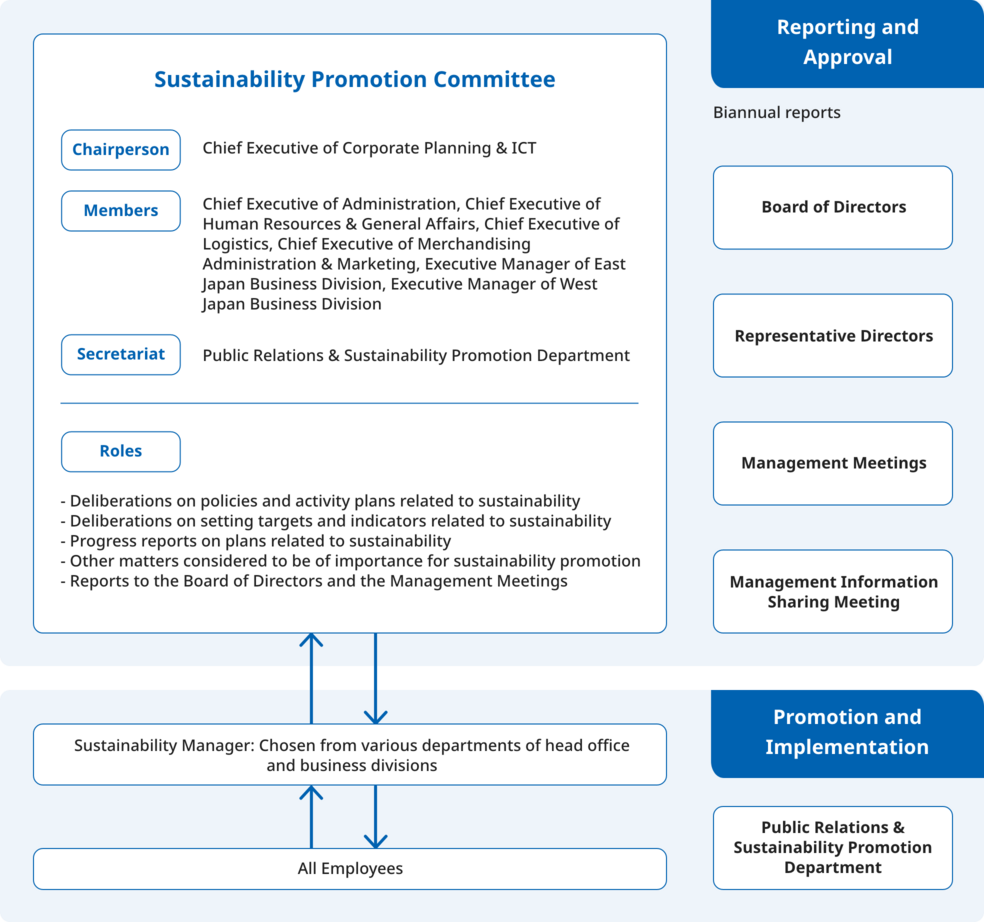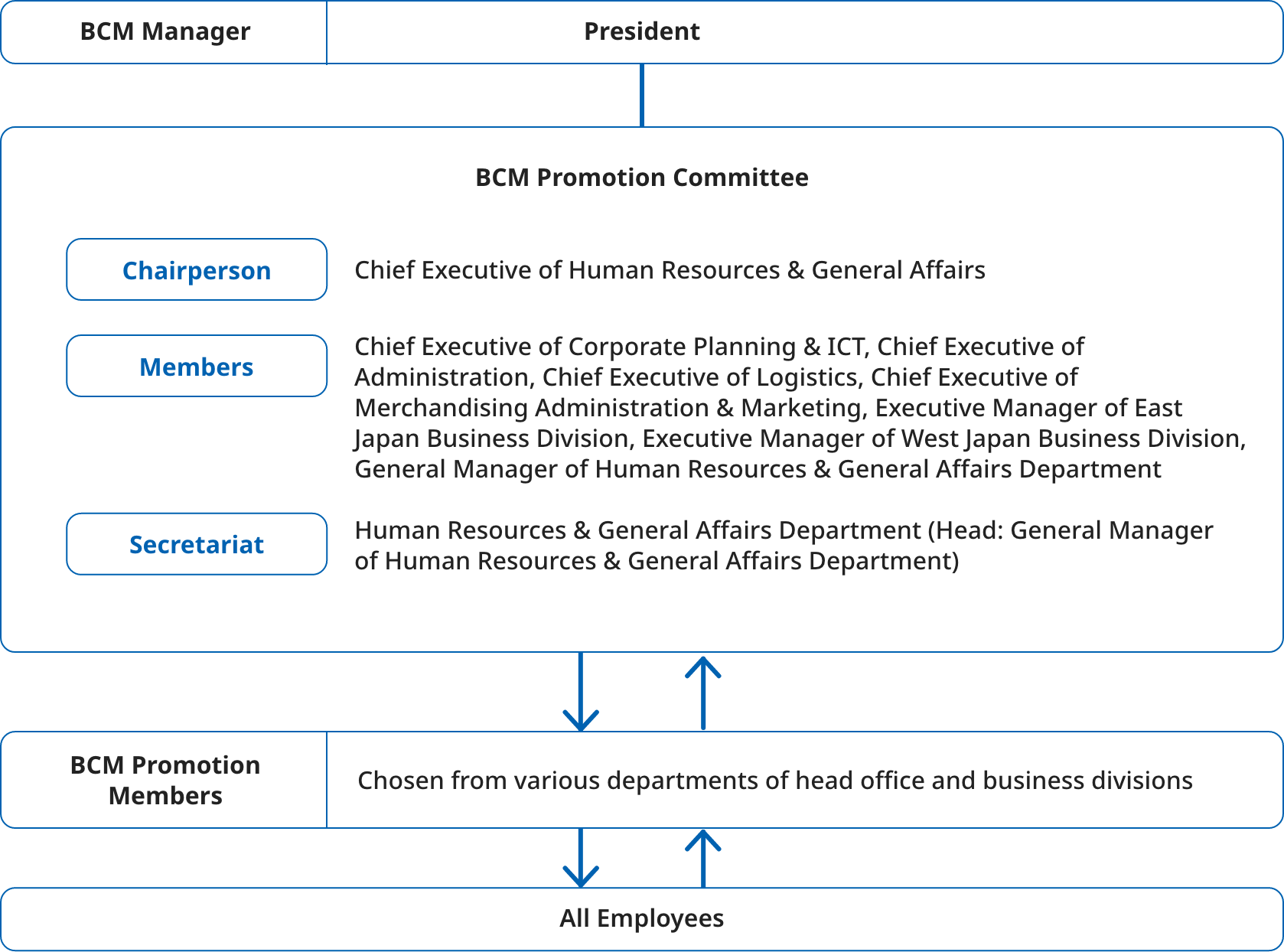Governance
Basic Principles
As a member of the ITOCHU Group, which upholds the spirit of “sanpo-yoshi” (benefit for the buyer, the seller, and society) as its corporate philosophy, NIPPON ACCESS is committed to our own corporate philosophy of “protecting, connecting, and creating” a taste that touches your heart. Through our business activities, which include the distribution of food, we strive to consider the overall optimization of various stakeholders, not just our own profits, and aim to remain a trusted company by preventing legal violations and risks. To this end, we have organized several internal systems that support long-term, sustainable social contributions and enhance corporate value.
Governance Structure
In addition to setting a one-year term of office for directors, we also appoint multiple part-time directors from outside the company. Furthermore, to rigorously oversee the execution of their duties, we have appointed part-time auditors from our parent company. We are committed to enhancing transparency in decision-making and establishing a corporate governance structure that incorporates appropriate monitoring and supervisory functions to ensure proper and efficient operations.
Board of Directors
The Board of Directors is the company’s highest decision-making body that determines important matters related to our operations. It also supervises the execution of duties by directors. Currently, the board consists of a total of twelve members, including two part-time directors. In addition, three auditors, including one part-time auditor, attend board meetings. Directors execute their duties in accordance with laws, articles of incorporation, board resolutions, and internal regulations, as determined by the Board of Directors. Furthermore, they report on their duties to the Board of Directors once every three months.
Introduction of Corporate Officer System
To accelerate decision-making and enhance the supervisory role of the Board of Directors, we have introduced a corporate officer system. Corporate Officers are chosen by the Board of Directors based on the articles of incorporation and internal regulations to oversee the company’s operations. Following the decisions made by the Board of Directors, they carry out their responsibilities under the guidance, instructions, and supervision of the president.
Auditors
With the goal of promoting the sound development of the group and enhancing corporate value, auditors annually formulate policies and plans for auditing the status of significant management issues. Additionally, they have regular opportunities to exchange opinions on auditing results and other matters with the Internal Control & Audit Department and accounting auditors. Auditors participate in major meetings to receive the reports necessary for fulfilling their duties and hold regular meetings with the president to exchange opinions.
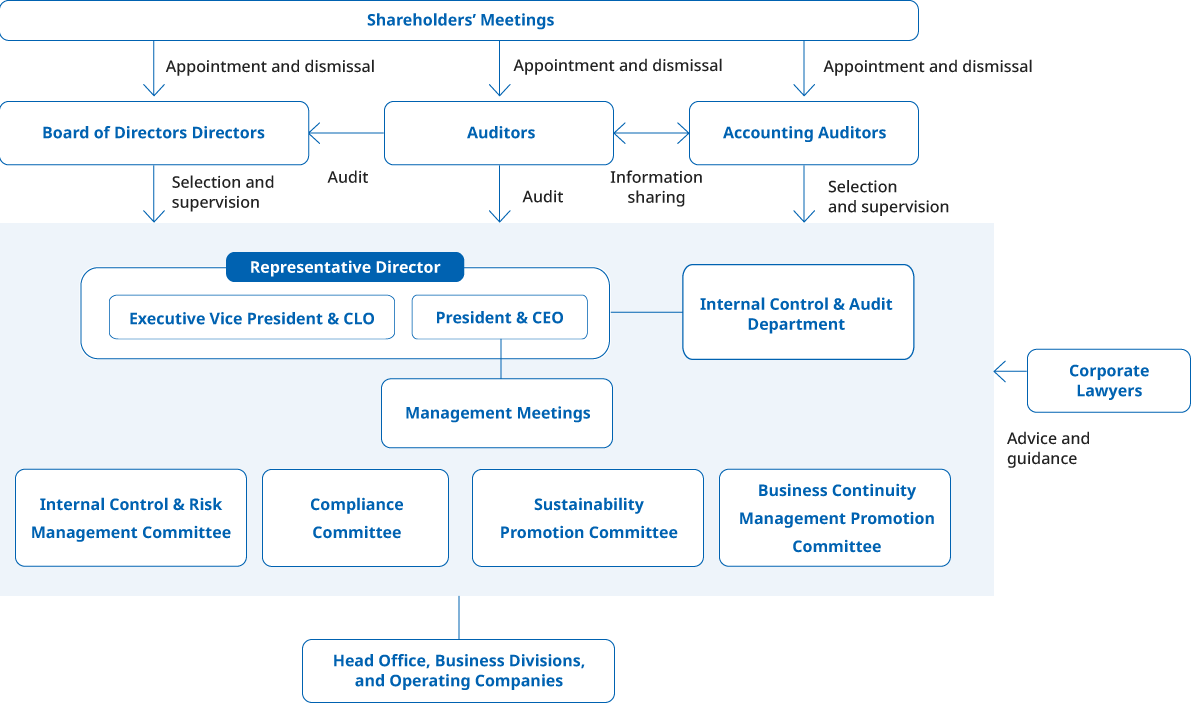
Risk Management Structure
Establishment of Internal Control Systems
We have established systems to ensure that directors’ duties comply with laws and articles of incorporation, as well as fundamental policies for necessary systems to ensure the proper execution of other operations (internal control systems). We conduct annual reviews of the operational status.
Understanding Risks and Adapting to Changes
We strive to adapt to diverse and drastically changing risks by clarifying responsibilities for each risk and repeatedly conducting monitoring and reviews.
Risk Monitoring and Reviews
We categorize specific risks identified throughout the company into 18 categories and assign a department responsible for risk management to each of them. The departments responsible for risk management develop countermeasures against risks and regularly monitor and review the implementation conditions and effectiveness of these measures. After monitoring and reviewing, if previously identified risks materialize or new risks emerge, we promptly consider and implement specific measures to address them.
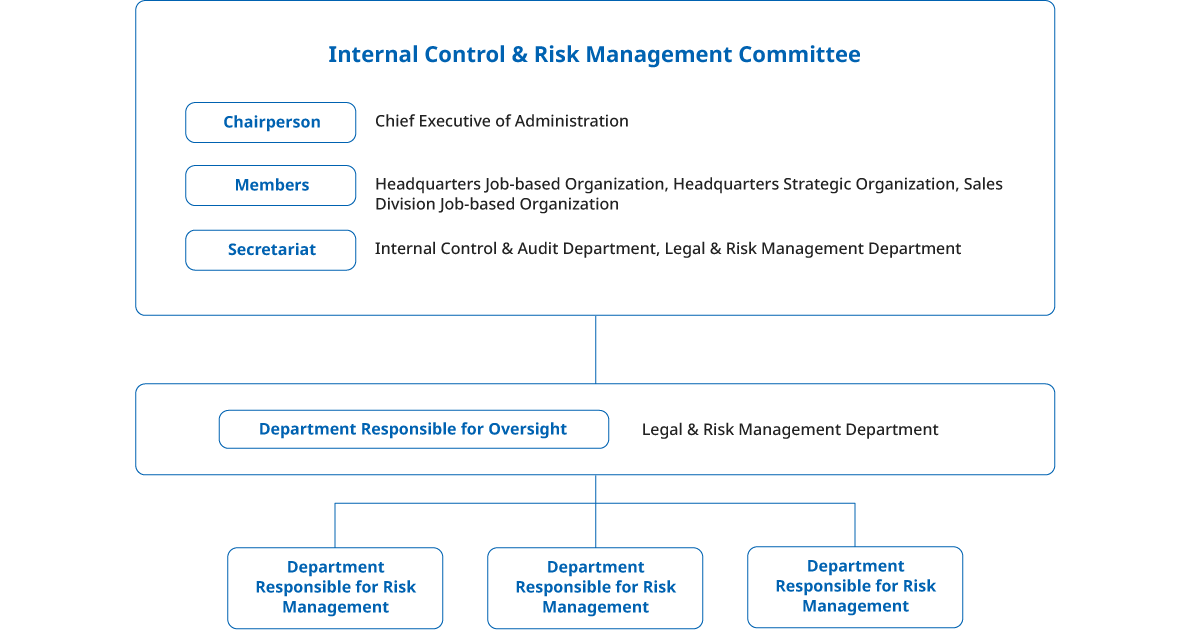
Compliance Structure
NIPPON ACCESS has established the Compliance Committee, which comprises certain officers and general managers as well as external lawyers to promote effective compliance management.
Education and Awareness Raising
Compliance leaders are assigned to each organization and conduct internal education and training under the guidance of the Compliance Committee. Additionally, the Legal & Compliance Department conducts training sessions for employees at every level, aiming to raise awareness among the employees.
Helpline System
We have established a helpline through which every employee can report to the secretariat of the Compliance Committee (Legal & Compliance Department) or external institutions. The purpose of this initiative is to identify compliance issues, including instances of injustice and harassment, at an early stage and address them.
●Click here to see the contact address for external parties to report issues (Japanese only)
Response to Violations
In response to reports from employees and instances of compliance violations revealed through the helpline, we will thoroughly investigate the facts, identify the root causes, and implement countermeasures to prevent their recurrence. Furthermore, we will take measures, including disciplinary actions, against officers and employees involved in the violations.
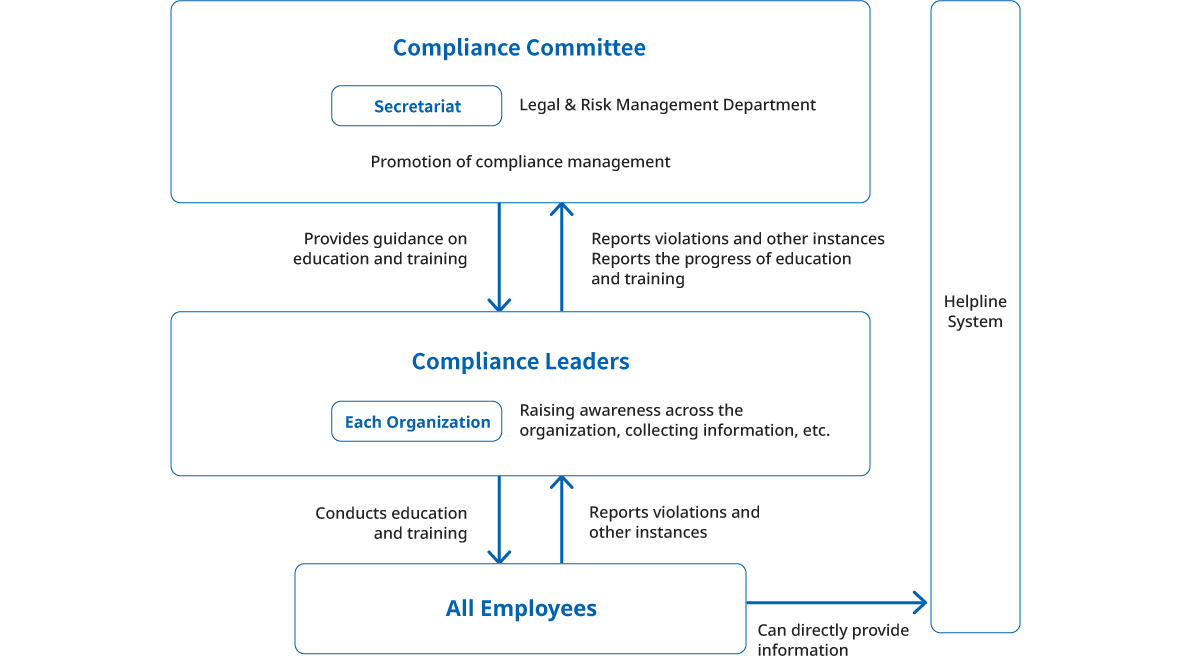
BCM Promotion Structure
Preparing for Emergencies
In preparation for unexpected events that may cause significant losses to the company, including disasters such as large-scale earthquakes and pandemics, we have established the BCM Promotion Committee and organized systems for BCP (Business Continuity Plan) formulation and BCM (Business Continuity Management). The committee identifies critical operations to prioritize for continuity or recovery and aims to minimize business interruption.
Sustainability Promotion Structure
Our company launched the Sustainability Promotion Committee in April 2023 to ensure sustainability within our core business as part of our management strategy. The committee is chaired by the Chief Executive of Corporate Planning & ICT, who is also responsible for sustainable issues, including climate change. The committee establishes policies and targets for key issues and conducts progress reports, deliberations, and discussions at least twice a year. The outcomes of these deliberations are then reported to the Board of Directors and the Management Meetings, ensuring effective monitoring and supervision of target progress and performance by both the Board of Directors and management.
